There are two things I really enjoy about living in this part of Canada. The first is the four distinct seasons. The second thing is the hardwood forests. For myself, the best way to experience each season in its’ fullest is to immerse myself in these woods. During those times I’ll go for a run. Or hug some trees. Or I’ll take some photos. Often it is a combination of all three. Every season is so special to me. Whether it is the zingy, fresh green leaves of spring, the cooling effect of the trees dense foliage on a hot summer day, the brilliant orange, red and yellows of autumn or being amongst the trees as they stand proudly in their naked beauty above a blanket of glistening white snow in winter, I always leave the forest refreshed and rejuvenated.

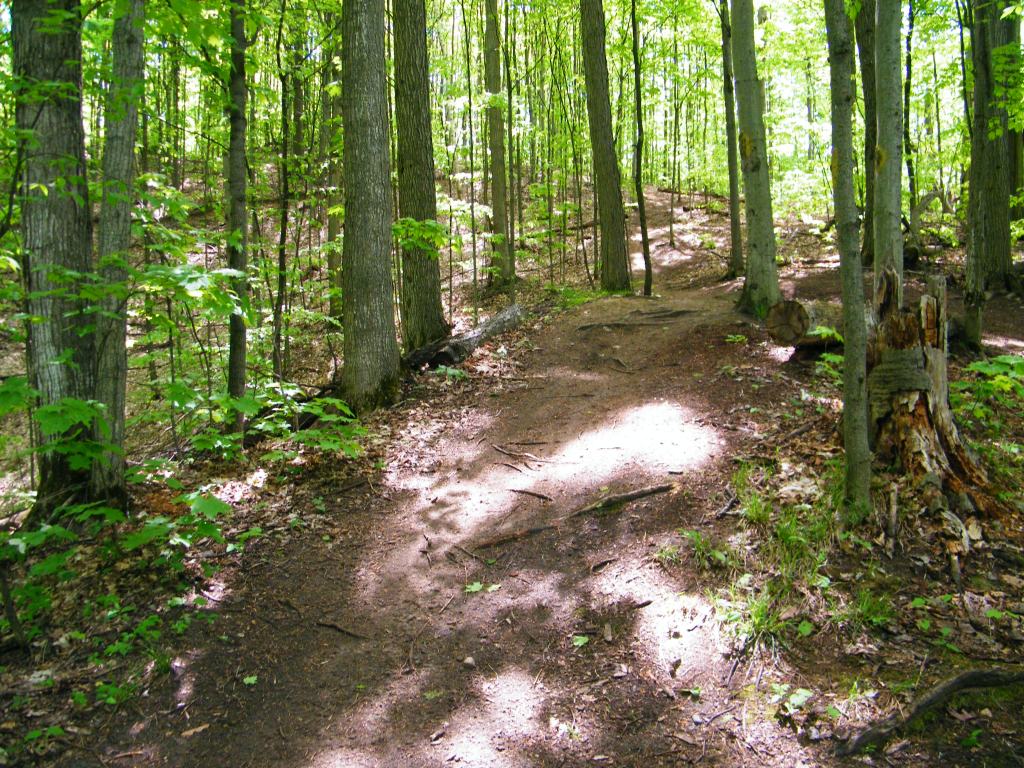


There is a period of time between late winter and early spring that is unique in the forest. It is called maple syrup season. This season is a quintessential part of Canadian culture and history. The Indigenous People were the first to discover the sweet sap of maple trees, which they used for centuries for food and medicine. They looked at maple sap as a gift from their creator, arriving at a time just before spring when their ancestors’ food reserves were low. Settlers learned how to extract maple syrup from the Indigenous peoples. When I attended Georgian College in 2010-2011, I took an elective course called “History of Aboriginals”. I learned that for the Canadian First Nations people, maples are widely considered the leaders of trees. Maples are more than a symbol or resource for Indigenous peoples; they are a valuable connection to the land that is part of their cultural identity. We can learn so much from the Indigenous people. For thousands of years the Indigenous people lived in a harmonious balance with nature and the environment. If only we could do the same.
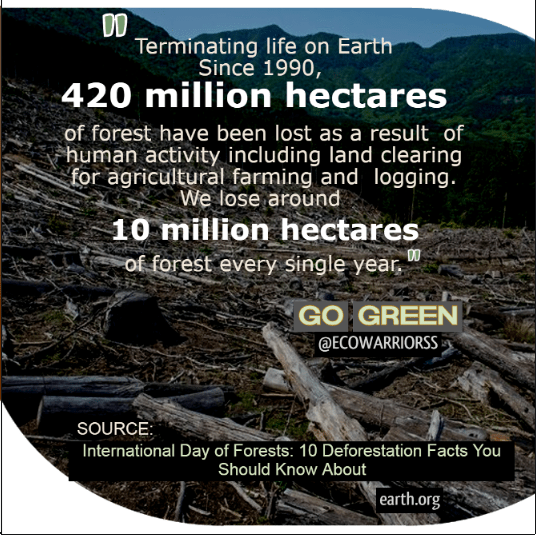
Growing up on the farm my dad and my mom’s brother Uncle Bernal produced just enough syrup for our two families by tapping a small number of maple trees in our 10 acre mixed hardwood bush. We individually gathered the sap that flowed from metal spiles into galvanized buckets that hung on each tree. The sap was collected daily using a 12 horsepower 1971 Skiroule snowmobile pulling an upside down VW beetle hood with a 45 gallon drum on top. If the drum got full we transferred the sap using a bucket to another barrel at the location where we boiled the sap. As long as the temperatures stayed near freezing, the sap would keep for several days before bacteria started to grow. Once we had enough sap, we would boil it down in a large iron kettle over an open flame, a process that was time-consuming and required a lot of labor. It also used up a lot of wood. Such great memories though. Plus I got to stay up late while sitting on a log in the forest with my dad, my older brother and my Uncle Bernal watching the fire. So wonderful listening to the many stories that everyone shared. Once the sap was boiled down to a certain percent of water content, my mom finished it off on the kitchen stove at home.

Although there are still likely some home hobby maple syrup operations around, the vast majority of maple syrup produced these days comes from a commercial operation. These producers are able to boil down larger quantities of sap in a more efficient and controlled manner, resulting in a higher quality product. Vacuum pumps, reverse osmosis, and other technologies have since been introduced, further improving the efficiency and quality of maple syrup production.

A couple of weeks ago on “maple weekend” my wife and I attended an open house at our organic farmer friends John and Suzanne Williams at their operation called Williams Farm. John is president of the Ontario Maple Syrup Association (OMSPA) which has over 600 “sugar makers” on their membership. John is very much in tune with the environment. He would be great in this role. From their website it mentions the OMSPA “Works closely with their members to encourage sustainable sugar bush management practices, to promote improved maple syrup production methods, to promote and market maple syrup and related products in Ontario and to provide a unified voice on issues that matter to the maple industry”.
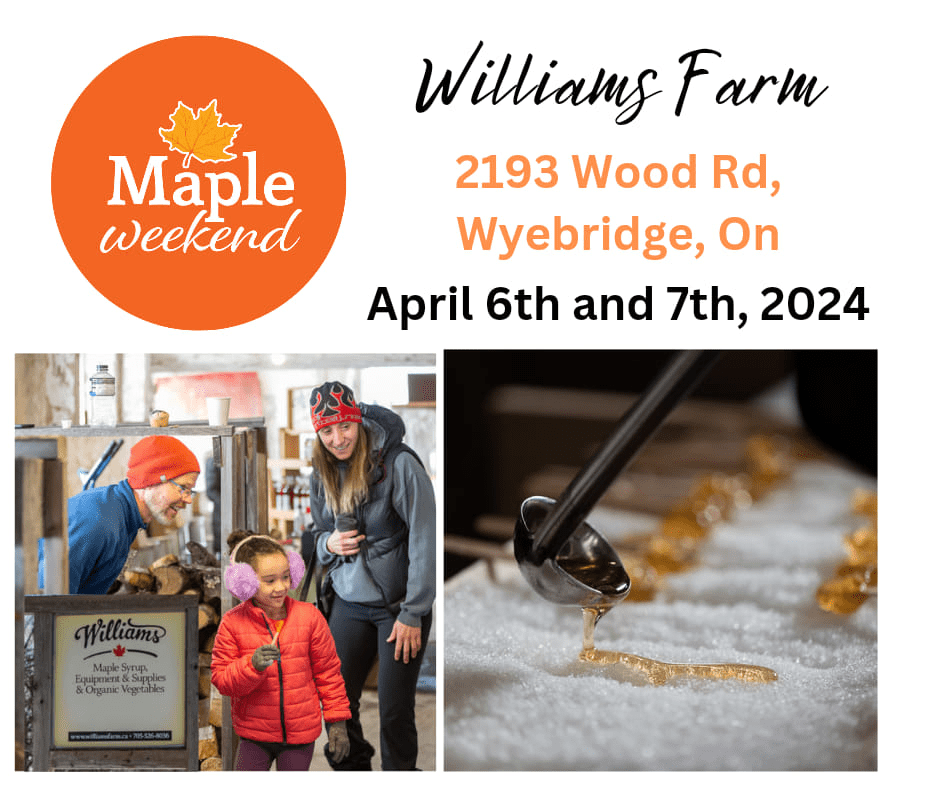
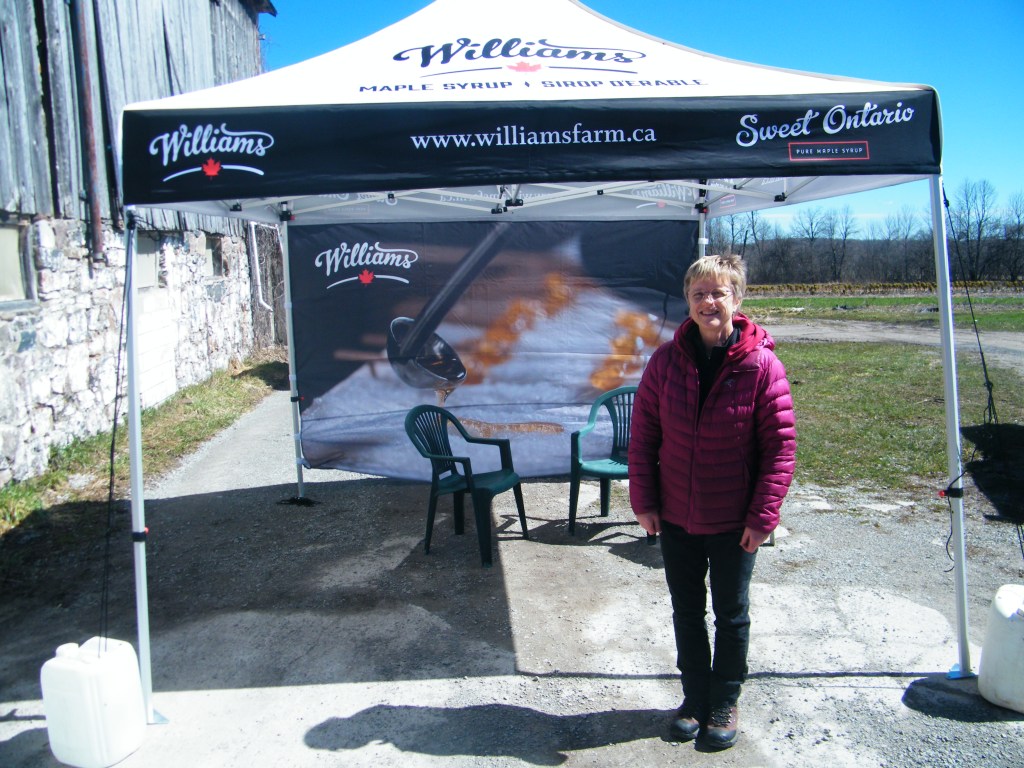
The cool thing with the Williams Farm operation is that the syrup making all takes place within their 150 year old barn. But before that happens, it all starts in the forest (typically called a sugar bush) when the trees are tapped. The ideal time for tapping is during late winter or early spring when temperatures rise above freezing during the day but still fall below freezing at night. This past winter there was such erratic, fluctuating temperature swings. January typically is the coldest month of the year where the temperature usually never should get above freezing. This past January there was an astounding 17 days with highs above freezing. While February had 21 days with highs above freezing. It really made it challenging knowing when to tap. John Williams mentioned he did his first boil on February 9th this year, which is incredibly early. It actually reached a high of 13 Celsius that day. This is several weeks earlier from when we did our 1st boils on the farm over 50 years ago.


Unlike all the labour intensive manual handling of sap when we produced maple syrup the traditional way while I was a kid on the family farm, John Williams maple syrup modern operation has virtually no manual handling. Other than hooking up a few hoses. The small plastic spouts inserted in the trees are connected to huge webs of plastic tubing that route the precious sap into a large tank. From there it is pumped into a portable stainless tank and transported by tractor to the sugar barn to be processed.

It was really nice to have Kim Kerr (who attends the the 1st of the 3 churches I preach at) give Lynne and I a personal tour of the modern maple syrup process that takes place in the sugar barn at Williams Farm. The first step the sap undergoes is the reverse osmosis filtration station. It takes about 40 gallons of sap to make one gallon of maple syrup because sap is about 98% water. The reverse osmosis machine is able to eliminate much of the excess water in the sap before boiling. Not only does it greatly reduce the time it takes to go from sap to syrup, it also means less time monitoring the evaporator and less wood needed to boil and make the syrup. It was also mentioned it takes 75% less wood burned, which is huge. Plus the water removed through reverse osmosis is as pure as you can get. It is used in cleaning equipment. Nothing is wasted.

The condensed sap from the reverse osmosis machine is pumped into the evaporator for the finishing process. A firebox under the evaporator tank is filled and maintained with wood which boils the sap down even further. During this boiling process either John, his wife Suzanne or employee Kim would carefully monitor temperature levels. They use precision instruments that were developed specifically for making syrup to determine when the maple syrup is finished.



Once the syrup reaches the desired density and flavor profile, it’s filtered through a filtering machine before being bottled for distribution. Sure beats the cheesecloth that we used 50 years ago on the farm. Maple syrup is classified based on colour or transparency clarity. The four classes are golden with delicate flavor, amber with rich flavor, dark with robust flavor, and very dark with strong flavor. My favorite maple syrup is very dark. Though this might be too strong for some people. The darker the syrup, the later in the season it was produced. A peer reviewed study reveals very dark maple syrup contains more antioxidants and minerals than the lighter varieties. These grades I think are consistent through all Ontario commercial maple syrup producers. To add a note if you buy maple syrup. make sure it is 100% pure. To be marketed as such, maple syrup must come from a maple tree. If it is adulterated with other syrups, such as corn syrup, then it must be labeled as “maple-flavoured.”



Other maple products you can buy are maple sugar, maple candy and maple butter. Maple sugar is made by heating the maple syrup further to the point where it turns it into crystallized sugar. There are lots of recipes on the internet on how to make maple candy, which is like a fudge. There is a real art to making it. If you want to try making it at home, you will definitely need a candy thermometer. Then there is maple butter, where the name is a bit misleading. There is no butter or dairy product added, and made with 100% maple syrup. To produce maple butter, maple syrup is heated up, then quickly cooled down and whipped to a point where it becomes beautifully smooth like butter. In the early days it was a process called churning. Some pioneer farms used to have manual wooden butter churns for making dairy cream into butter. They also could have made maple butter with the butter churn. The state-of-art stainless steel machine that made maple butter at Williams Farm looked very impressive.


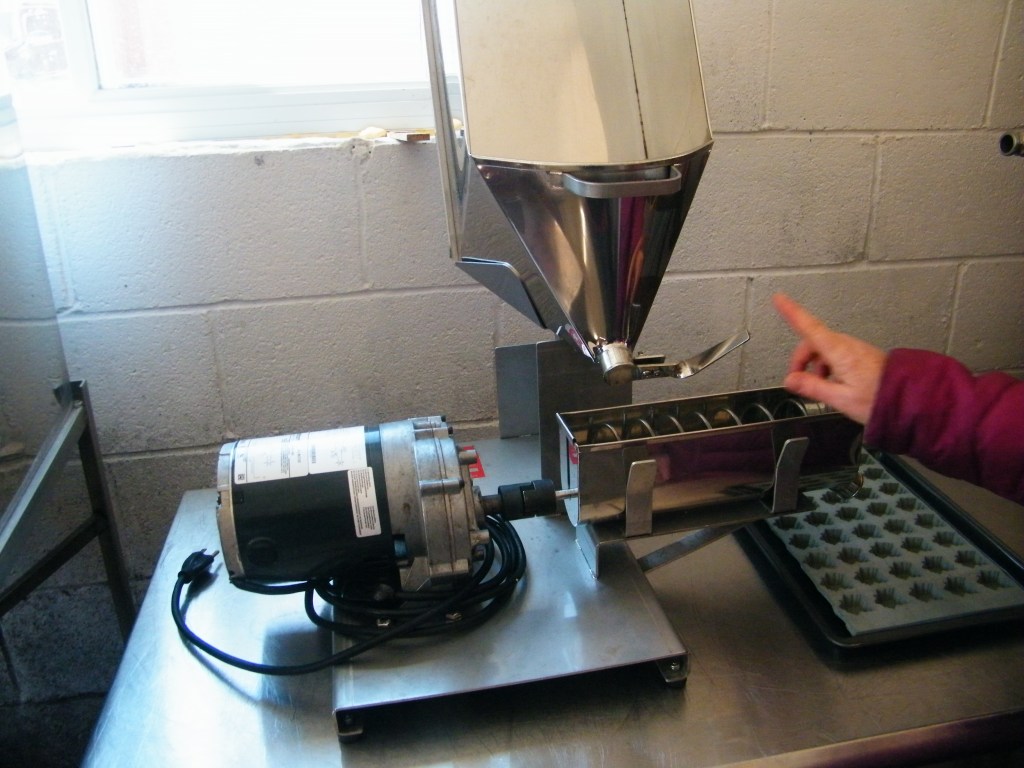
For making maple candy.


John Williams wife Suzanne demonstrating making maple taffy by pouring maple syrup on snow. There was not a speck of snow outdoors by the time Maple Weekend came around. The snow was obtained by storing it in a freezer when there was snow.
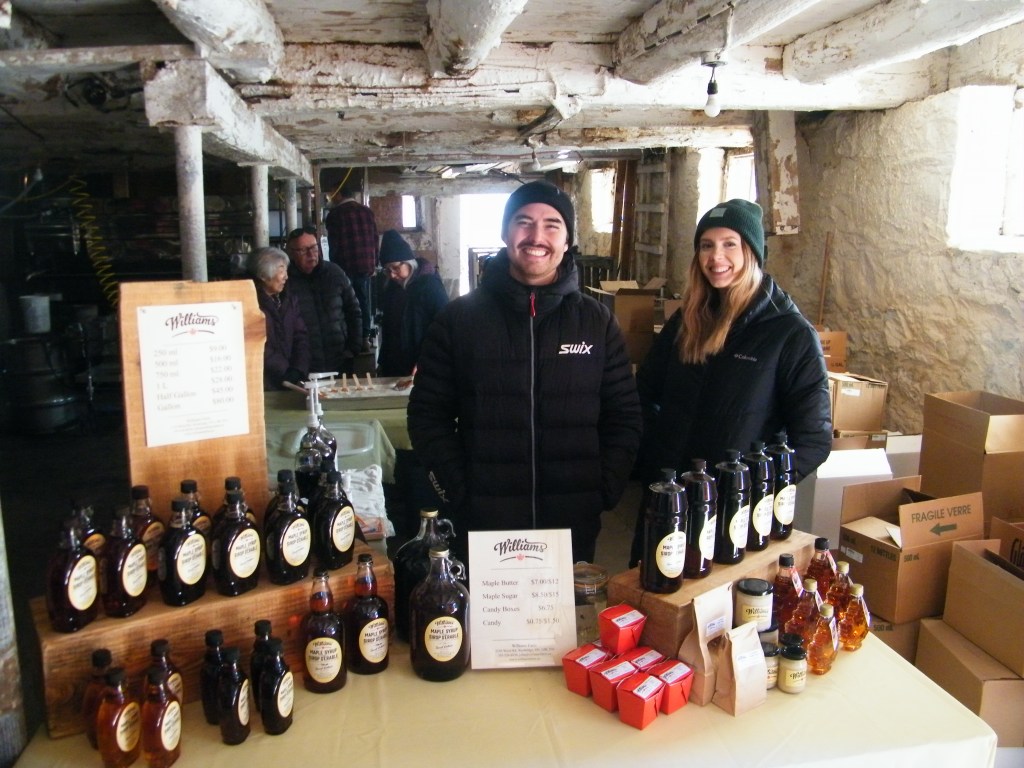
The art of making maple syrup is a Canadian tradition that has been going on for centuries, starting with the Indigenous people. Sadly, the sweet, amber syrup and the people who produce it today face an uncertain future. Our quickly changing climate is greatly affecting our planets ecosystems. Canada’s iconic maple trees, revered for their glorious fall colours and sweet sap is no exception. An article by Phys.org titled, “This is Our Forest: Climate Change Means Uncertain Future for Maple Trees, Syrup Season” mentions “Cold winters tend to produce higher sugar concentrations in the following spring”. The last few winters have been shorter and milder with less snow and more rain. It also means less snowpack to protect the roots from freezing temperatures when it does get below freezing. These are less than ideal conditions for maple trees. Rising temperatures adversely affect sugar maple trees. This leads to earlier sap flow, shorter sugaring seasons, lower sugar concentrations in the sap and more extreme weather conditions that damage the trees. A Radio Canada interactive article by Daniel Blanchette Pelletier titled “Maple Syrup is Under Threat“, it talks about the requirements of the growing conditions that maple forests need in regards to moisture and temperature. Using the current modelling of how our climate is warming, between 2041 and 2070 there will be a 23.26% loss of ideal growing conditions for sugar maple trees. Between the years 2071 and 2100 there will be a 99.72% loss of ideal growing conditions for sugar maple trees. What happens is the hardwood forests that I love to run through and forest bathe in these days might no longer exist in this region as we know it. I won’t be around in 2100, but knowing these forests have existed for centuries makes me very sad.

The article does point out that these scenarios are likely to happen “If no mitigation measures were taken and greenhouse gas emissions continued to increase until the end of the century”. The important thing is we have to make changes now. Another thing I have noticed in my own lifetime is that many hardwood forests now have much less biodiversity than the days of my youth. Over the decades, many of these forests have been cleared of other species of hardwoods to become just monoculture maple forests. Some forest owners have even gone further by removing all deadfall and standing dead trees. This results in unsuitable habitat for many species of animals. I rarely see or hear any birds or animals in these types of forests. In addition, these types of forests are more vulnerable to the impacts of climate change. To address this, World Wildlife Federation-Canada is currently launching a program called Maple Initiative. Their goal is to bring together key industry players: “Sugar bush owners, maple producers, forest engineers, academic experts and environmental NGOs so those forests are restored back to a healthier state”. Because a biodiverse forest habitat not only supports more species; it also helps fight climate change. Though it seems counterintuitive, it actually improves maple productivity. A mixed forest has a far greater tree and plant diversity resulting in healthier soils that store more moisture and carbon. Resulting in a far healthier forest. And for the maple trees that are tapped, it means more sap and more syrup.

This is my article for Earth Day 2024. Another Earth Day article I wrote regarding our quickly changing climate is found here. The actual theme for Earth Day 2024 is Planet vs. Plastics. Compiled from 120 sources, EarthDay.org has written a comprehensive 59 page report titled Babies vs. Plastic.



A very interesting and fascinating post on making maple syrup. In Alaska where I live, some people do small family operations of birch syrup.
LikeLiked by 1 person
Thank you so much for taking the time to read. It is really neat to hear about tapping birch trees for birch syrup. I have heard of the birch trees being used in the Yukon as well.
LikeLiked by 1 person
You’re welcome! The flavor is more robust in birch syrup but I really enjoy it.
LikeLike
Congratulations Carl on another interesting article on maple syrup. We make syrup (but haven’t made for last two years), by way of tapping trees and placing buckets on the tree. We have a tractor that has a tank on the back and we collect the sap by way of buckets dumped into this tank once tank is full we make our way to the sugar shanty and place sap in another tank ready to be boiled. We have an evaporator that we use to boil. It is hard work, but very rewarding at the end I hope we can make some another year and that the season will be a little more predicable. We usually don’t tap until near the end of March I guess our bush is a little later. I never grew up doing syrup, but have always enjoyed going to where they do it and now I live on the farm where Robert has done it all his life. Your article was interesting as to how syrup was originated. Keep up the good work Carl on your blogging and happy Earth Day. Sheila Ego
LikeLiked by 1 person
Thank you for reading and sharing such a detailed response, Sheila. That’s amazing. I wasn’t aware that you and Robert have been making maple syrup on your farm. Tapping near the end of March is more typical for most winters. This past winter was so unpredictable. Records were set for the earliest maple season. Maple syrup really does have a neat history.
LikeLike
Hi there, this was very interesting and thorough, and great photos! I have never been to Canada, but I once brought my kids to a farm in Highland Park Illinois to find out how Maple syrup was made. It was well beyond what I had imagined. As a kid, I thought that what came out of the tree was thick and syrupy. They even let us taste the sap in that state, before production.
LikeLike
Thank you for stopping by. The farm maple syrup making demonstrations are the best. They are so educational. I am very fortunate with having grown up on a farm. Instead of taking water with us to drink while working in the sugar bush, we would just drink some sap.
LikeLike
Thank you so much for this interesting article, Carl.
How nice to have memories of making syrup with your family! Looking at how we live our lives today, such times seem like from another planet.
Thanks for the detailed description of the process – I had no idea how important a proper, cold winter is for the maple syrup production!
The impact of global warming is everywhere and will affect us in ways we never even thought about. Man-made shortcuts to increase productivity – like in the maple syrup production – will always backfire in the long term. Biodiversity is here for a reason.
What will happen until we reach 2070 or 2100? I hate to think. It certainly looks like only divine intervention will save the planet.
Keep up the good work, Carl. The world needs more people like you!
LikeLiked by 1 person
You are welcome, Catrina. Thank you for your kind reply. I am very fortunate for the family farm upbringing. We did a lot of simple things like that together. Definitely is much more modernized with the commercial operations.
It is really alarming how mild and unpredictable our winters are becoming. And how quickly we are losing our biodiversity.
Thank you so much for your encouragement.
LikeLiked by 1 person
This is an incredibly informative piece of about maple syrup and our environment, Cal. You write well and bring together Canadian culture and broader themes so seamlessly. I really enjoyed reading this piece this evening, especially about how you manually harvested maple syrup with buckets back in the day. It sounded like a tough gig but one that very rewarding – not just for the syrup but the camaraderie among your family and everyone who did it together.
Also fascinating to take a look into how maple syrup production is done today the modern way. I had no idea that maple butter isn’t really butter, fascinating. From what you described, it sounds like maple syrup in another form, but smooth like butter. Interesting how climate change is affecting maple syrup production, and really sad to hear that the tree you shared at the end will be destroyed. It is a beautiful tree. Sometimes you have to wonder what the cost of development is, and it is disappointing when the beauty and naturaly cycles of nature gets affected.
Hope you are doing well, Carl. Happy Spring to you 😊
LikeLike